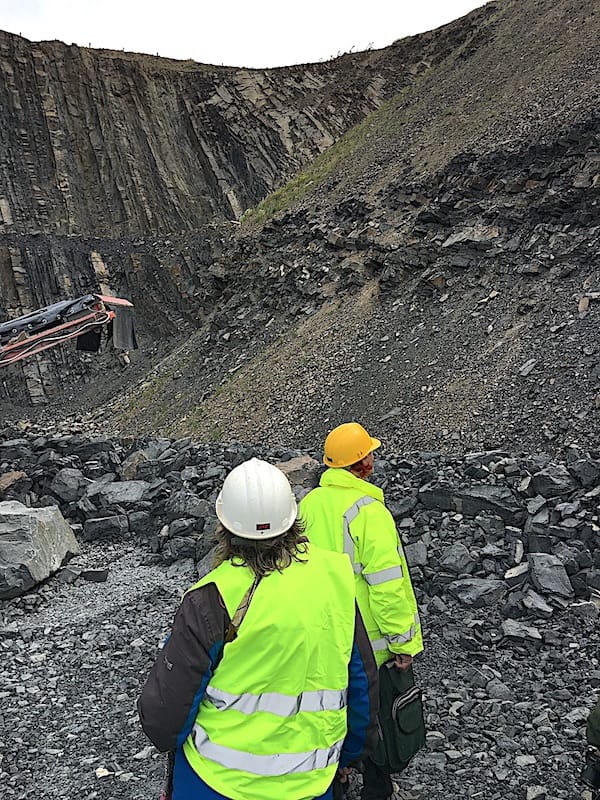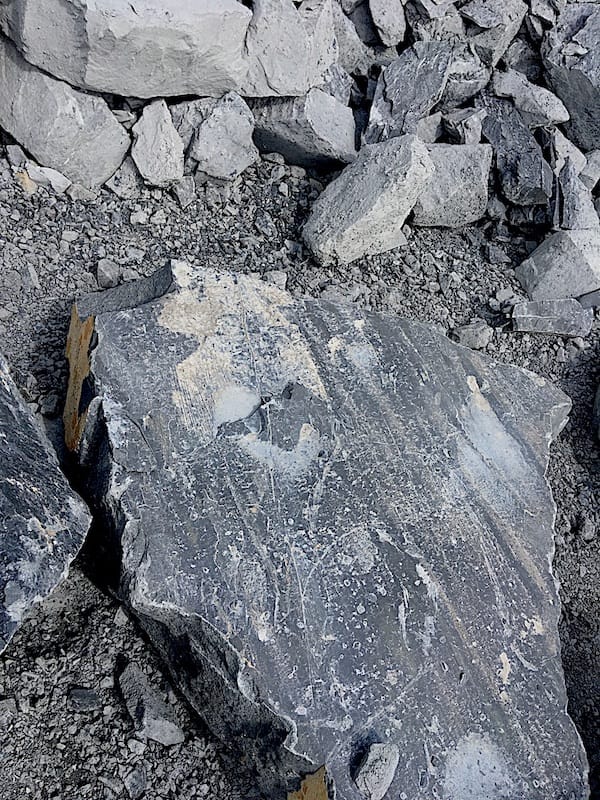Field visit to Tan-y-Foel quarry
MWGC field visit to Tan y Foel quarry 22/6/25. (SJ 013 014)
Tan-y Foel quarry is owned and operated by H V Bowen and Sons (Holdings) Limited but in 2014 Breedon Aggregates acquired a 50% interest in the company. It is with thanks to H V Bowen and sons and Mike Jones the quarry manager for allowing our group in and providing information on the quarry.
The quarry is renowned for its high PSV ( polished stone value >68) aggregates being some of the highest in the country. This makes the aggregate highly desirable for use as road stone as high PSV stone has a high skid resistance and is in great demand for use on roads with a high traffic volume. Permission for quarrying at the quarry was first given in 1948 and a new set of planning conditions approved in 1997. In 2013 the quarry underwent a vertical and lateral extension.
MWGC last visited the quarry in 2010 so a lot had changed by this visit but the geology was just as interesting. We were led by Prof. David James a sedimentologist
Tan Y Foel has one of the most extensive exposures of Wenlock turbidite systems in Wales. The turbidites consist of sandstone dominated deposits inter-layered with mudstones and siltstones and form part of the Penstrowed Grits Formation. The sequence dips steeply to the SE so that the bedding is almost vertical. Previous work using current indicators showed that the sandstones were carried by submarine density currents from southern parts of the Welsh basin whilst some of the finer sediments were transported in from the basin margin to the east.

Quarry face by Michele Becker
As we could not get close-up to the quarry face we made observations from a distance. The north wall had good examples of ripple marks ( also present a peregrine nest with chicks). At the main quarry face we could observe the inter-layered beds of sandstones, mudstones and siltstones. The sandstone beds varied in thickness with some being metres in thickness. This sequence is SE younging and steeply dipping.
Further to the SE side of the quarry we observed what appeared to be horizontal strata when observed from a distance. When we had a closer view it became apparent that the main quarry was forming a steep limb from and asymmetrical anticline whose axis trends NE/SW with the other strata forming a more gentle sloping limb.

Examining the anticline by Michele Becker
The bulk of the time in the quarry was spent examining large boulders which were scattered around the quarry floor. Here we spent some time determining the Bouma sequences present and way-up of the boulder. Bouma sequences of ‘A’,’B’ and ‘C’ were found. Flute and groove casts showed directional flow but could not be attributed to flow direction of the sequences as the boulders were in isolation.
Slickensides on the surface of one boulder possibly suggests the presence of bedding slip, whereas a further boulder had a very good example of a dewatering structure.

Slickensides on surface of boulder by Michele Becker
In all a very interesting and informative few hours with thanks to prof. David James.